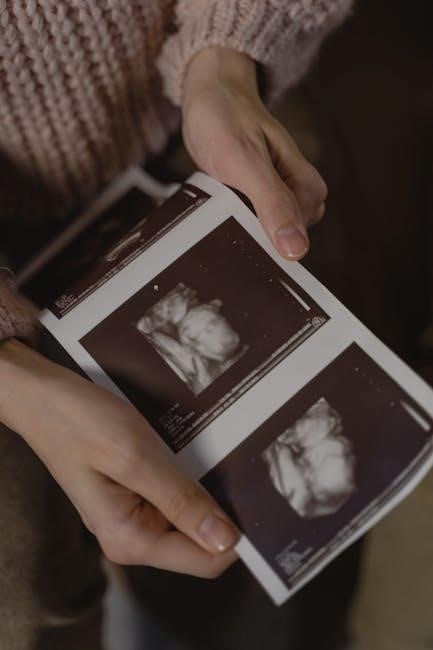Ultrasound-guided biopsy of the thyroid is a precise method for evaluating nodules, combining imaging with needle placement to ensure accuracy and minimize complications. Commonly used for diagnostic purposes.
Overview of Thyroid Biopsy Procedures
Thyroid biopsy procedures are essential for diagnosing suspicious nodules or abnormalities in the thyroid gland. These procedures are typically performed to assess lumps detected during physical exams or imaging studies. Fine needle aspiration (FNA) biopsy is the most common method, involving the removal of cells for cytological evaluation. Core needle biopsy (CNB) is another option, providing tissue samples for histopathological analysis; Both methods may utilize ultrasound guidance to enhance precision. Ultrasound-guided biopsies are preferred for their ability to target lesions accurately, reducing complications and improving diagnostic yields. Proper documentation of the procedure, including the number of lesions and guidance methods, is critical for accurate coding and billing. These procedures play a vital role in thyroid cancer screening and management.
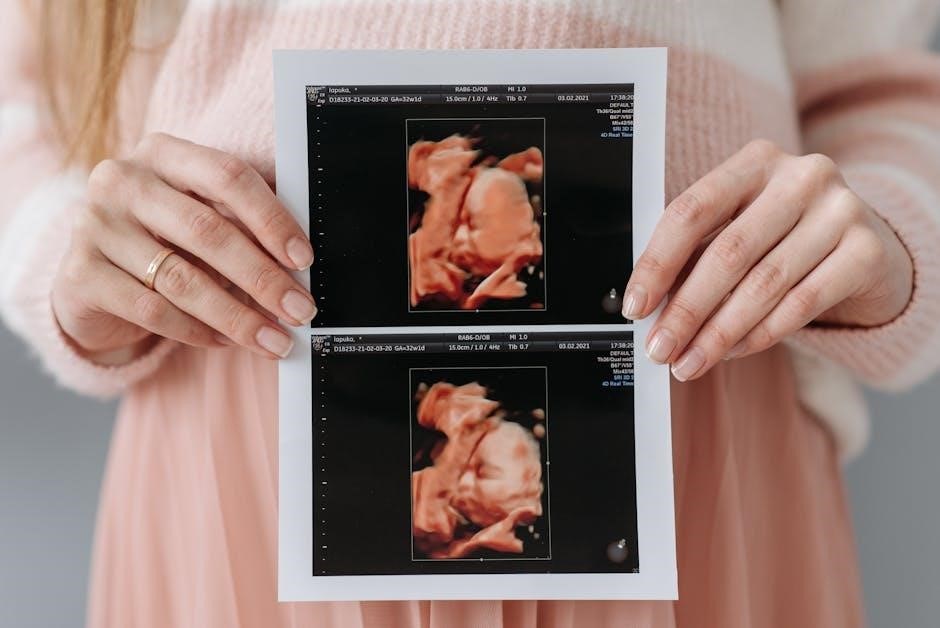
CPT Codes for Ultrasound-Guided Thyroid Biopsy
CPT codes 10005 and 10006 are used for ultrasound-guided thyroid biopsies, with 10005 for the first lesion and 10006 for additional lesions. Code 76942 is added for ultrasound guidance.
CPT Code 10005: Fine Needle Aspiration Biopsy, First Lesion
CPT code 10005 is specifically designated for the first lesion in a fine needle aspiration (FNA) biopsy of the thyroid under ultrasound guidance. This code includes the ultrasound imaging essential for precise needle placement, ensuring accurate sampling of the nodule. It is used for the initial lesion evaluated during the procedure and is a critical component in the diagnostic process for thyroid abnormalities. Proper documentation is required to justify the use of this code, ensuring it reflects the first lesion biopsied. This code is essential for accurate billing and reimbursement for thyroid FNA procedures, making it a cornerstone in coding for thyroid diagnostics.
CPT Code 10006: Fine Needle Aspiration Biopsy, Additional Lesions
CPT code 10006 is used for fine needle aspiration (FNA) biopsy of additional thyroid lesions beyond the first one. This code applies to each subsequent lesion sampled during the same procedure. It is essential for billing when multiple nodules are evaluated, ensuring accurate reimbursement for each additional biopsy performed. Like CPT 10005, it includes ultrasound guidance, which is critical for precise needle placement. Proper documentation is required to distinguish between the first and additional lesions, ensuring compliance with coding guidelines. This code is vital for practices performing multiple biopsies, as it reflects the complexity and extent of the procedure accurately.
CPT Code 76942: Ultrasonic Guidance for Needle Placement
CPT code 76942 is specifically used to report ultrasonic guidance for needle placement during procedures like biopsies or aspirations. This code is essential when ultrasound imaging is utilized to direct the needle accurately to the target lesion. It is a separate code from the biopsy procedure itself and must be billed in addition to the primary biopsy code (e.g., 10005 or 10006). The use of 76942 ensures reimbursement for the imaging component of the procedure, which is critical for precise and safe needle placement. Proper documentation of the ultrasound guidance is required to justify the use of this code, avoiding any potential billing discrepancies or denials. This code is not included in the biopsy codes and must be reported separately to reflect the complete procedure accurately.
Selection of Appropriate CPT Codes
Selecting the correct CPT codes for ultrasound-guided thyroid biopsy involves identifying the procedure type and the number of lesions. Start with the primary biopsy code and add codes for additional lesions and imaging guidance as needed.
Criteria for Choosing the Correct Code
Selecting the appropriate CPT code for ultrasound-guided thyroid biopsy requires careful consideration of the procedure type, lesion count, and imaging guidance. Begin by determining whether the biopsy is a fine needle aspiration (FNA) or core needle biopsy, as this dictates the primary code. For FNA, use CPT code 10005 for the first lesion and 10006 for each additional lesion. Core needle biopsies are reported with 60100. Always append 76942 for ultrasound guidance. Use modifier 59 to indicate distinct procedural services when multiple biopsies are performed. Accurate documentation of lesion location and number ensures proper code selection and compliance with billing guidelines.
Use of Modifier 59 in Multiple Lesion Biopsies
Modifier 59 is used to indicate distinct procedural services, such as multiple biopsies performed at different sites during the same session. For ultrasound-guided thyroid biopsies, Modifier 59 should be appended to CPT codes 10006 or 60100 when additional lesions are biopsied. This ensures proper reimbursement and avoids bundling of services. Documentation must clearly describe each lesion’s location and the separate needle placements to justify the use of Modifier 59. Proper application of this modifier is essential for accurate coding and compliance with billing guidelines, especially in cases involving bilateral or multiple nodule biopsies.
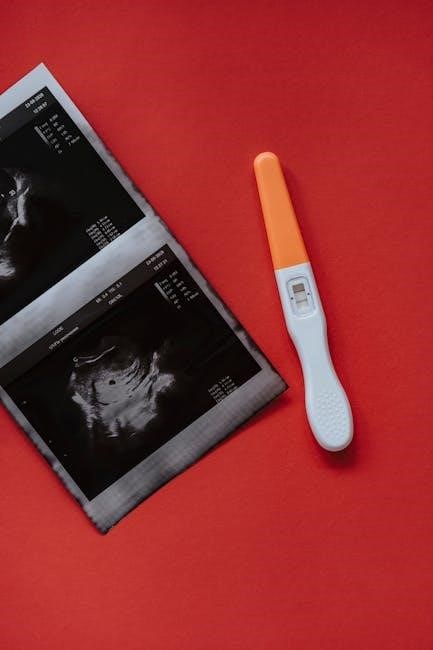
Billing Guidelines for Ultrasound-Guided Thyroid Biopsy
Accurate coding and documentation are essential for proper reimbursement. Use CPT codes 10005 for the first lesion and 10006 for additional lesions, with 76942 for ultrasound guidance. Adhere to guidelines to avoid denied claims.
Documentation Requirements for Accurate Coding
Accurate and complete documentation is crucial for correct coding of ultrasound-guided thyroid biopsy procedures. The medical record must clearly detail the number of lesions biopsied, their locations, and the use of ultrasound guidance. For CPT code 10005, document the first lesion, while 10006 applies to additional lesions. Note the laterality (e.g., left or right thyroid) for proper coding. Distinctive documentation is required for FNA versus core needle biopsy procedures. Use of modifier 59 is necessary when multiple procedures are performed on separate sites or lesions. Proper documentation ensures compliance with coding guidelines and prevents billing errors or denied claims.
Proper Reporting of Multiple Procedures
When multiple ultrasound-guided thyroid biopsy procedures are performed, each must be reported accurately to ensure correct billing. For the first lesion, use CPT code 10005, and for each additional lesion, use CPT code 10006. If procedures are performed on separate sites or lesions, append modifier 59 to indicate distinct services. Proper reporting requires listing each procedure separately with the appropriate codes and modifiers. This ensures compliance with coding guidelines and avoids billing errors. Accurate documentation of the number and location of lesions is essential for correct reporting of multiple procedures.
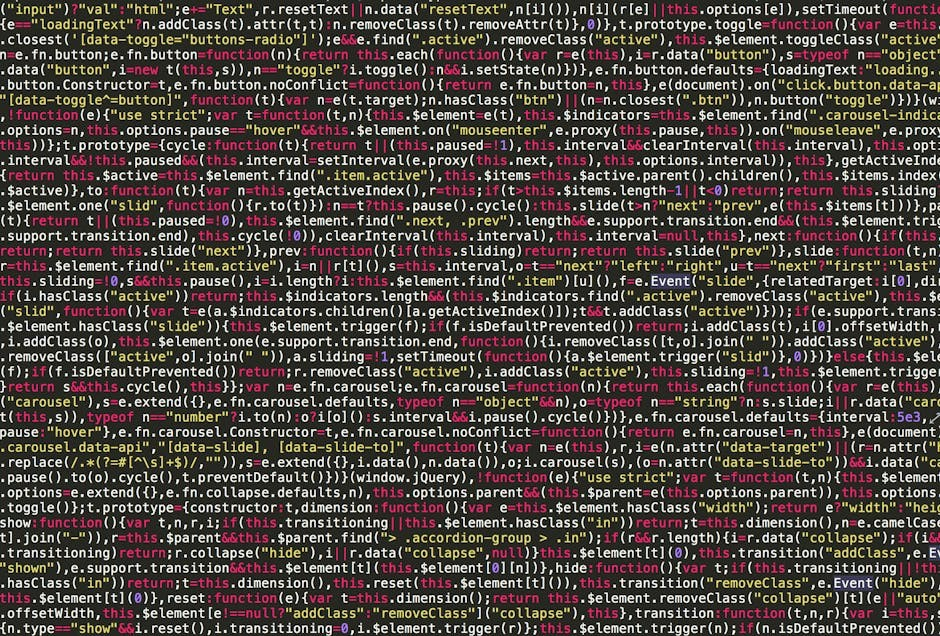
Differences Between FNA and Core Needle Biopsy
FNA uses a thin needle for cell sampling, while core needle biopsy collects tissue cores for histology. CPT codes 10005/10006 are for FNA, and 60100 for core biopsies.
CPT Codes for Core Needle Biopsy (60100)
CPT code 60100 is designated for a percutaneous core needle biopsy of the thyroid, providing a tissue sample for histological examination. This code is distinct from FNA procedures, as it involves obtaining larger tissue cores rather than cellular samples. Core needle biopsies are often performed when FNA results are inconclusive or when a more detailed tissue analysis is required. The procedure is typically used to evaluate suspicious nodules or lesions. Unlike FNA, core needle biopsies may require additional imaging guidance, such as ultrasound, which is billed separately under CPT code 76942. Proper documentation is essential to differentiate this procedure from other biopsy types and ensure accurate coding.
Handling Multiple Lesions in Thyroid Biopsy
When multiple thyroid lesions are biopsied, CPT codes 10005 and 10006 are used for the first and additional lesions, respectively, with modifier 59 for distinct procedures.
Coding for Bilateral or Multiple Nodule Biopsies
For bilateral or multiple thyroid nodule biopsies, CPT code 10005 is used for the first lesion, and 10006 for each additional lesion. Modifier 59 is applied to indicate distinct procedures. Proper documentation is essential to differentiate between bilateral and multiple nodule biopsies, ensuring accurate coding. For example, a left thyroid nodule and a right thyroid nodule are coded separately, with 10005-RT and 10006-LT. This approach ensures that each lesion is accounted for individually, adhering to coding guidelines and avoiding bundling of procedures. Accurate documentation of each nodule’s location and the use of ultrasound guidance are critical for correct reimbursement.
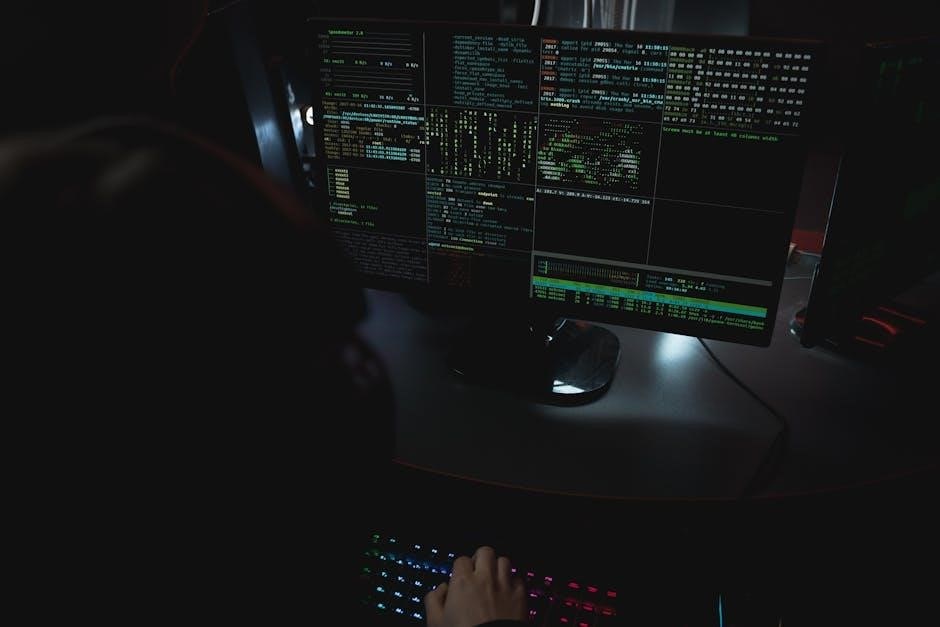
Importance of Ultrasound Guidance in Coding
Ultrasound guidance enhances accuracy in thyroid biopsy procedures, ensuring precise needle placement and reducing complications. It is essential to code this separately using CPT 76942 for proper billing.
Role of CPT Code 76942 in Biopsy Procedures
CPT code 76942 is specifically used to report ultrasonic guidance for needle placement during biopsy procedures, including thyroid biopsies. This code is essential for documenting the use of ultrasound technology to guide the needle accurately, ensuring precise tissue sampling. It is billed separately from the biopsy procedure itself, such as CPT codes 10005 or 60100, and highlights the importance of imaging in minimizing complications. Proper use of 76942 ensures accurate reimbursement for the technical component of ultrasound guidance, making it a critical part of coding for thyroid biopsy procedures. This code is applicable for each biopsy site requiring ultrasound guidance.

